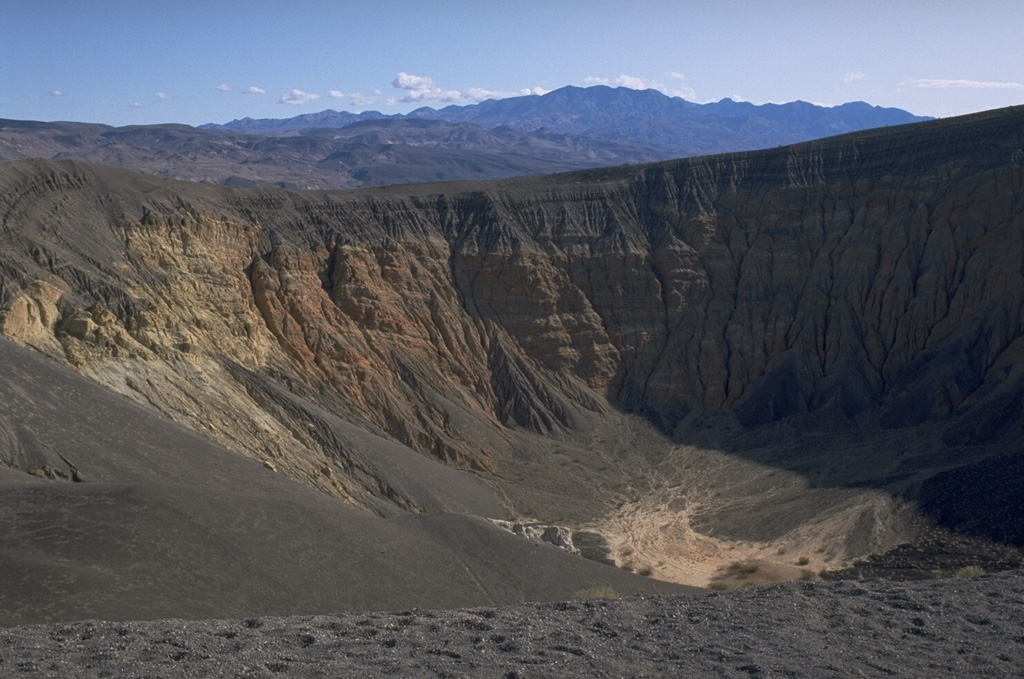Global Volcanism Program | Image GVP-03305

Ubehebe craters are an isolated group of maar volcanoes erupted through nonvolcanic sediments of Death Valley National Park. The craters were formed by hydrovolcanic explosions along a fault. The contact between pre-eruption yellowish- and orange-colored sedimentary rocks and overlying black ash deposits from an early stage scoria cone can be seen at the upper part of the western wall of 800-m wide, 235-m deep Ubehebe crater, the youngest and largest crater.
Photo by Lee Siebert, 1974 (Smithsonian Institution).
![]() This image is made available under the Public Domain Dedication CC0 license, but proper attribution is appreciated.
This image is made available under the Public Domain Dedication CC0 license, but proper attribution is appreciated.

Ubehebe Craters
